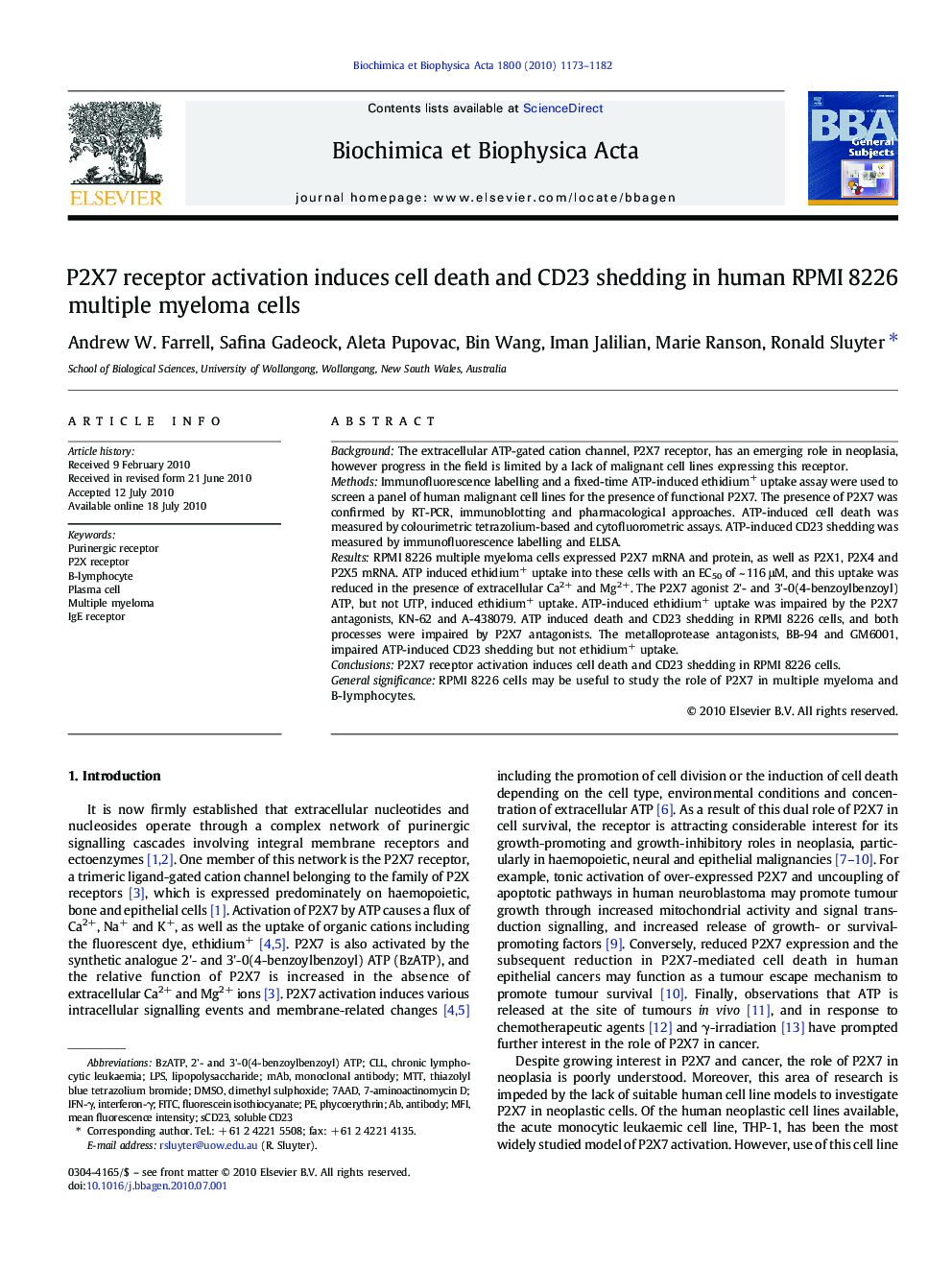| Article ID | Journal | Published Year | Pages | File Type |
|---|---|---|---|---|
| 1947913 | Biochimica et Biophysica Acta (BBA) - General Subjects | 2010 | 10 Pages |
BackgroundThe extracellular ATP-gated cation channel, P2X7 receptor, has an emerging role in neoplasia, however progress in the field is limited by a lack of malignant cell lines expressing this receptor.MethodsImmunofluorescence labelling and a fixed-time ATP-induced ethidium+ uptake assay were used to screen a panel of human malignant cell lines for the presence of functional P2X7. The presence of P2X7 was confirmed by RT-PCR, immunoblotting and pharmacological approaches. ATP-induced cell death was measured by colourimetric tetrazolium-based and cytofluorometric assays. ATP-induced CD23 shedding was measured by immunofluorescence labelling and ELISA.ResultsRPMI 8226 multiple myeloma cells expressed P2X7 mRNA and protein, as well as P2X1, P2X4 and P2X5 mRNA. ATP induced ethidium+ uptake into these cells with an EC50 of ~ 116 μM, and this uptake was reduced in the presence of extracellular Ca2+ and Mg2+. The P2X7 agonist 2'- and 3'-0(4-benzoylbenzoyl) ATP, but not UTP, induced ethidium+ uptake. ATP-induced ethidium+ uptake was impaired by the P2X7 antagonists, KN-62 and A-438079. ATP induced death and CD23 shedding in RPMI 8226 cells, and both processes were impaired by P2X7 antagonists. The metalloprotease antagonists, BB-94 and GM6001, impaired ATP-induced CD23 shedding but not ethidium+ uptake.ConclusionsP2X7 receptor activation induces cell death and CD23 shedding in RPMI 8226 cells.General significanceRPMI 8226 cells may be useful to study the role of P2X7 in multiple myeloma and B-lymphocytes.
